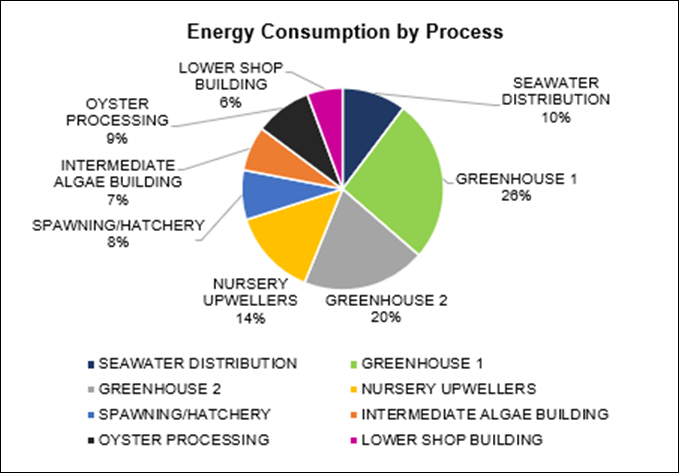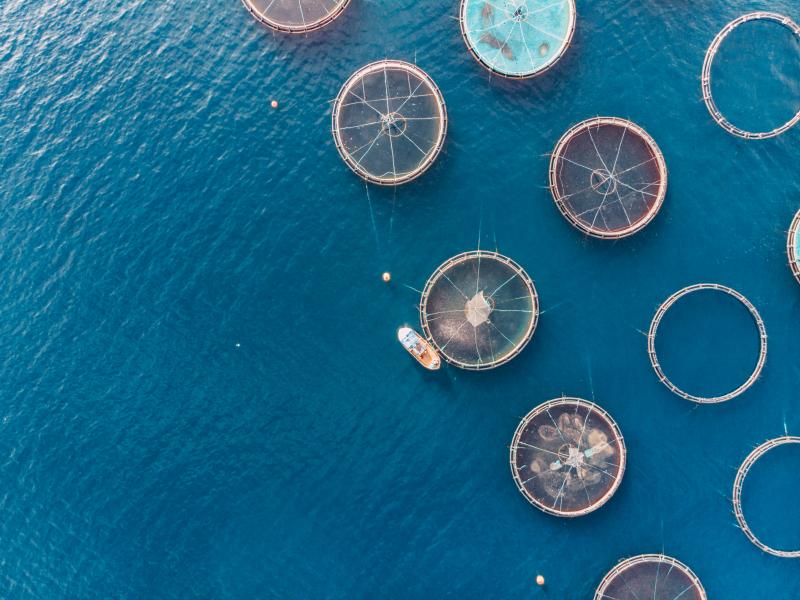Community-Scale Aquaculture and Marine Energy in the Southern Salish Sea
In partnership with the Jamestown S’Klallam Tribe (JST), Pacific Northwest National Laboratory (PNNL) is investigating the ability of marine energy to support community-scale aquaculture. Tribal aquaculture represents an important component of community-scale aquaculture, which is typically defined as onshore and nearshore aquaculture operations in remote or coastal communities.
The Jamestown S’Klallam Tribe has a diverse aquaculture operation that includes the commercial growth and harvest of larval and adult shellfish and a research effort involving net pen sablefish. The current operations occur at several locations around the northeast Olympic Peninsula and the southern Salish Sea.

Project Goals
This project is focused on the southern Salish Sea, which includes the traditional waters of JST. We are exploring the feasibility for marine energy to power and contribute to sustainable practices for aquaculture though three lines of investigation:
- A spatial analysis that includes a marine energy resources assessment to understand the potential for wave and tidal energy throughout the region. This includes an analysis of parameters to identify suitable options for co-location of marine energy with JST’s current and future aquaculture operations.
- An energy assessment of current JST aquaculture facilities to understand how energy is used across the operation.
- Outreach and engagement about this project and the feasibility of co-locating marine energy and aquaculture more broadly.
Spatial analysis
The spatial analysis included two parts. First, the team conducted a resource assessment of marine energy, specifically wave and tidal energy, throughout the study area. Then, several parameters were used to identify locations that could be suitable for the co-location of marine energy and aquaculture. The parameters include existing uses of the marine environment, biophysical requirements for aquaculture, and critical habitat for threatened or endangered species.

Energy assessment

PNNL staff toured the JST aquaculture facilities and conducted a detailed assessment of their energy needs and uses. The outputs of the energy assessment include a breakdown of energy uses by facility, and the electricity needs for components of the operations. This will be compared against the modeled marine energy generation potential. The energy assessment also provides JST an opportunity to identify potential options for energy efficiency.
Outreach and engagement
The idea of co-locating marine energy and aquaculture is fairly new. That’s why a main objective of this project is to communicate with the aquaculture community about co-location possibilities and better understand their questions, concerns, and how they view the potential benefits of marine energy for their operations.
Throughout the project, there will be targeted community engagement activities to provide information on marine energy, aquaculture, and sustainable development via co-location. The team will also use the outreach and engagement efforts to understand perspectives and questions concerning marine energy and aquaculture and seek input from community members regarding what they see as opportunities for co-location.
Broader impacts
This work supports the development of the marine energy industry and demonstrates its value to remote and coastal communities by providing a better understanding of the applicability of marine energy for community-scale aquaculture. Results will further the understanding of the energy needs of community-scale aquaculture and the feasibility of marine energy technologies to support those operations.
Additionally, similar projects evaluating the potential for co-location of marine energy and aquaculture have been conducted in Puerto Rico and the United States Virgin Islands, Hawaii and California, and at kelp farms across the United States.
